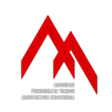Identifikasi Genotype Rumah Adat Sumba Barat dengan Metode Space Syntax
DOI:
https://doi.org/10.21776/ub.ruas.2018.016.01.5Keywords:
space syntax, vernacular architecture, West Sumba, genotypeAbstract
Various influences toward West Sumba traditional house’s morphology are affecting the way its exterior appearance has formed. Despite their exterior uniformity, each of these houses is showing different spatial configuration. Spatial configuration is a product of certain social processes. In other words, different society will produce different spatial configuration. Meanwhile, it is believed that space syntax method could be employed to elaborate objectively particular social phenomenon by examining its spatial configuration. Based on that, this research attempted to identify the genotype in those houses to reveal the social phenomenon occurred. Core and territory are parts of several factors that potentially represent a cultural pattern in certain society. The result revealed that these houses are in fact sharing same spatial patterns. It is strongly indicated by core and territory pattern comparison. Four of the five samples are showing a strong genotype, while the left one is showing a genotype differences. In addition, there is a fact that this house with different genotype is located in a village that exposed to modernization.
References
Adeokun, C. O. (2013). The Orowa House: A Typology of Traditional Yoruba Architecture in Ile-Ife. In West Africa Built Environment Research.
Dawson, P. C. (2002). Space syntax analysis of Central Inuit snow houses. Journal of Anthropological Archaeology, 21(4), 464–480. https://doi.org/10.1016/S0278-4165(02)00009-0
Hariyanto, A. D., Asri, A., Nurdiah, E. A., & Tulistyantoro, L. (2012). Hubungan Ruang, Bentuk, dan Makna pada Arsitektur Tradisional Sumba Barat. Surabaya: Lembaga Penelitian dan Pengabdian Kepada Masyarakat Universitas Kristen Petra.
Hillier, B. (1984). The social logic of space. The Social Logic of Space, 247–249. https://doi.org/10.1016/0169-2046(86)90038-1
Hillier, B., Hanson, J., & Graham, H. (1987). Ideas are in things: an application of the space syntax method to discovering house genotypes, 14, 363–385.
I. Numan, O. D. (2005). The Transformation Opportunities of Cypriot Vernacular Houses under the Scope of Tourism. World Congress on Housing: Transforming Housing Environments through Design. Pretoria: IAHS.
Machdijar, L. K., Topan, M. A., Winandari, M. I., & Sofian, I. (2007). Megalitik Arsitektur Tradisional Sumba. Yogyakarta: Graha Ilmu.
Mross, J. (1995). Environmentally Responsive Design in the Settlement of the Cockatoo. 1st International Symposium on Asia Pacific Architecture: The East-West Encounter. Honolulu: University of Hawaii at Manoa.
Nazidizaji, S., & Safari, H. (2014). The social logic of Persian houses, in search of the introverted houses genotype. World Applied Sciences Journal, 31(5), 785–793. https://doi.org/10.5829/idosi.wasj.2014.31.05.1604
Nepal, S. (2010). Tourism and Remote Mountain Settlements: Spatial and Temporal Development of Tourist Infrastructure in the Mt Everest Region, Nepal. Tourism Geographies: An International Journal of Tourism Space, Place and Environment, 7(2), 205-227.
Rapoport, A. (1977). Human Aspects of Urban Form. Oxford: Pergamon Press.
Rapoport, A. (1969). House Form and Culture. Cultural Geography Series. New Jersey: Prentice-Hall, Inc.
Suprijanto, I. d. (2009). Penelitian dan Pengkajian Kehandalan Bangunan Tradisional. Denpasar: Balai Pengembangan Teknologi Perumahan Tradisional.
Thungsakul, N. (2001). A Syntactic Analysis of Spatial Configuration Towards The Understanding of Continuity And Change In Vernacular Living Space: A Case Study In The Upper Notheast of Thailand. Florida: University of Florida.
Tim Peneliti Widya Mandira. (1992). Arsitektur Vernakular. Kupang: Fakultas Teknik Arsitektur Universitas Widya Mandira.
Topan, M. A. (2005). Morfologi Arsitektur Sumba. Jurnal Penelitian dan Karya Ilmiah Lemlit USAKTI 17, 69-83.
Winandari, M. I. (2006). Arsitektur Tradisional Sumba. Jakarta: Universitas Trisakti.
Downloads
Published
How to Cite
Issue
Section
License
Authors who publish with this journal agree to the following terms:
- Authors retain copyright and grant the journal right of first publication with the work simultaneously licensed under a Creative Commons Attribution License that allows others to share the work with an acknowledgement of the work's authorship and initial publication in this journal.
- Authors are able to enter into separate, additional contractual arrangements for the non-exclusive distribution of the journal's published version of the work (e.g., post it to an institutional repository or publish it in a book), with an acknowledgement of its initial publication in this journal.
- Authors are permitted and encouraged to post their work online (e.g., in institutional repositories or on their website) prior to and during the submission process, as it can lead to productive exchanges, as well as earlier and greater citation of published work (See The Effect of Open Access).












